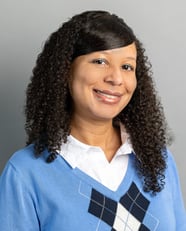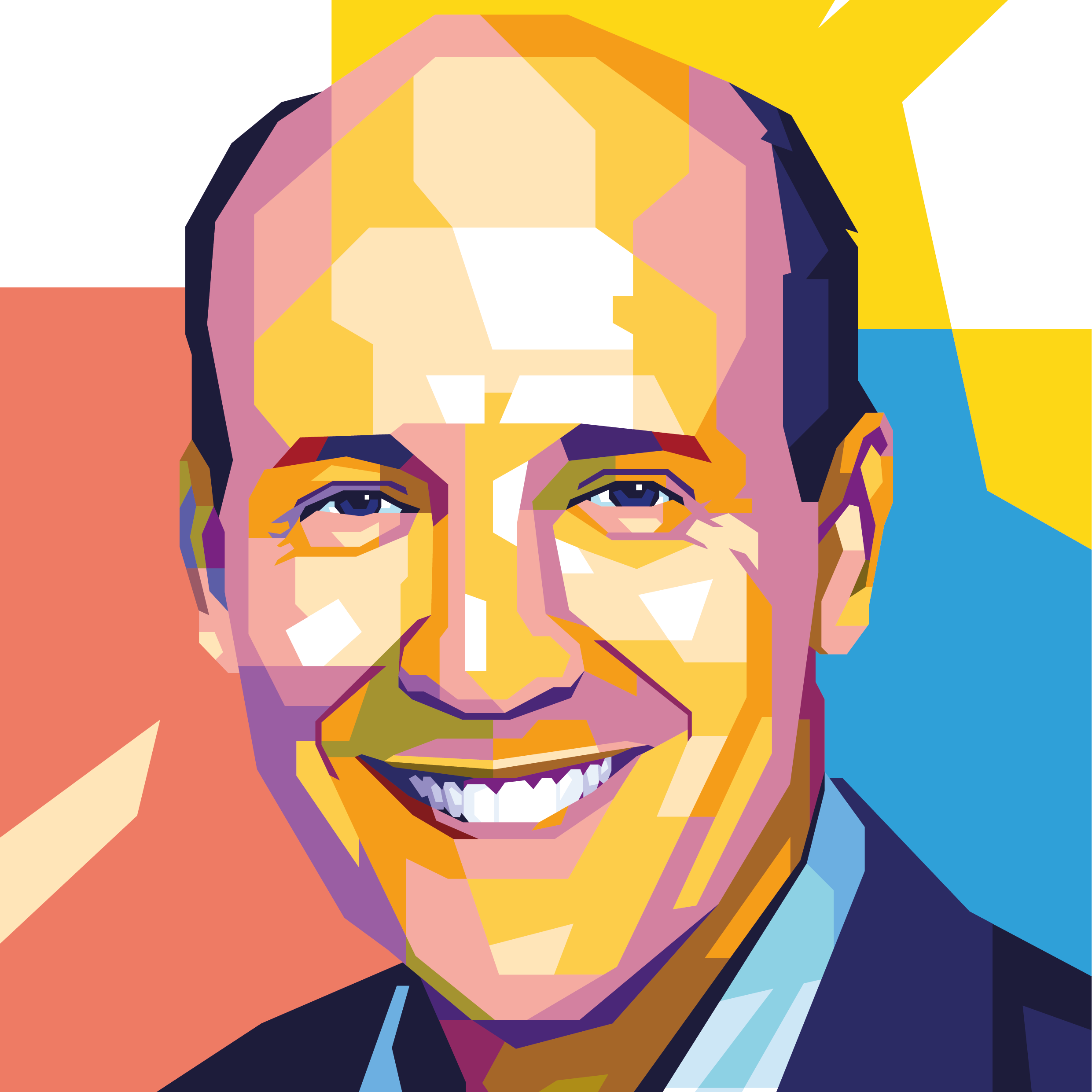Mike Ran was a chef. Jessica Robertson was an accountant. Today they’re both financial advisors.
Ran worked in restaurants in New York City and Philadelphia for ten years. He was about to open his own place, had funding lined up – and had an epiphany.
“If you’re going to go into the restaurant business, you have to be 150% committed,” Ran says. “Otherwise, you shouldn’t do it.”
Ran realized he was better suited for another service business – financial advice. “It’s a very translatable skill set,” he explains. “You have to accommodate people from all walks of life in both fields. You have to manage expectations. In restaurants, you’re providing an experience for one night. As an advisor, you provide an experience that helps people for a lifetime.”
 Robertson always knew she wanted to help people but hadn’t heard of the financial planning profession. After getting bachelor’s and master’s degrees in accounting from Loyola University in Chicago, she worked for an audit firm and a non-profit.
Robertson always knew she wanted to help people but hadn’t heard of the financial planning profession. After getting bachelor’s and master’s degrees in accounting from Loyola University in Chicago, she worked for an audit firm and a non-profit.
She became aware of financial planning through the American Institute of Certified Public Accountants and signed up for an “externship” program at the Financial Planning Association. Then Robertson became aware of BLatinX Internship, also known as BLX, an organization that places Blacks and Hispanics in internship programs at financial services firms.
BLX helped her prep for interviews and matched her with South Bay Financial Partners outside Chicago. After the internship ended, Robertson was hired as a full-time employee. “It’s a great fit,” she says. “They appreciate my background in tax and I can also do work beyond the numbers. After I did some research that helped a client whose child was struggling with serious issues, it brought the client to tears. That’s very gratifying.”
To be sure, talent is scarce and hiring is a hassle. It’s a lot easier to find an experienced advisor with a nice book of business.
But the odds are that that candidate will be a middle-aged white male. According to the CFP Board, three-quarters of certified financial planners are men, 82% are white and 94% are 30 or older. Only 2% are black, 3% are Hispanic and 4% are Asian.
Of course, a well-qualified advisor should be considered for an opening, no matter their background. But as the country’s demographics are rapidly changing, industry experts say it’s more important than ever for firms to expand their horizons, overcome their preconceptions and consider non-traditional candidates for job openings.
“It’s not just a moral decision; it’s a good business decision,” says Sheryl Rowling, financial advice editorial director for Morningstar, specializing in practice management. “A more diverse workforce means you can attract a more diverse clientele. The more someone identifies with an advisor, the more likely they are to become a client.”
In addition to expanding a firm’s client base, bringing on non-traditional employees also means a firm is exposed to new ideas, cultures and experiences “that in and of itself is worthwhile,” says Michael Eckton, CEO of Crestwood Advisors in Boston.
South Asians, for example, are one of the fastest-growing high-net-worth groups in the country. “If you have no idea what Diwali [the Hindu festival of lights] is, then you’re missing out on something that’s like Christmas, Easter and New Year’s rolled into one, and is very important to a lot of people,” Eckton says.
Even high-end family offices are recognizing the value of a more diverse workplace. “Family offices are a microcosm of society and reflect that diversity,” says consultant Rich Wolkowitz, principal at Xlogenesis, a St. Louis-based consultancy for family offices. “They see non-traditional hires as a true competitive advantage in today’s business world.”
Diversity can positively impact the bottom line as well. A study by McKinsey found that companies in the top quartile for racial and ethnic diversity were 35% more likely to outperform their respective national industry medians in terms of financial returns.
So how can RIAs attract more non-traditional hires, including women, younger people, people of color, members of the LGBTQ community and professionals looking to switch careers?
Crestwood and other advisory firms work with BLX. “We understand that each firm has unique requirements,” says Leisha Barton, the organization’s program director, “which is why all our interns undergo thorough screening to ensure the best fit for their specific needs.”
To become more inclusive, RIAs must “be mindful of unconscious biases,” Barton says. She adds that firms need to “look beyond traditional methods like recruiting from alma maters or through connections with clients' children” to yield a more diverse pool of candidates.
RIAs should consider holding financial planning workshops at Black churches and neighborhood events to get the word out about the profession, Robertson says. Frank Paré, president of the PF Wealth Management Group in Oakland, California, recommends recruiting at HBCUs (Historically Black Colleges and Universities) as well as state universities.
Samantha Pinheiro, an intern at Crestwood who comes from a Brazilian immigrant family and was placed through BLX, says she heard about financial planning through the Association of Latino Professionals for America.
In Boston, Crestwood broadens its demographic pool of candidates by recruiting at state schools like the University of Massachusetts instead of focusing only on Harvard, says Tiffany So, a client advisor overseeing recruitment at the firm.
But just recruiting minority candidates is not enough, say Paré and Robertson.
“There has to be an incentive program to ensure a firm-wide commitment to their success,” Paré says. “Have an onboarding program, mentors, apprenticeships and a clear career path laid out.”
Robertson says she benefitted greatly from being put on a big project as an intern. “I wasn’t just sitting in on client meetings,” she says. “I was given an operational assignment. I was able to work with and learn the firm’s software. I received feedback as we went along. It was very helpful and made me more marketable.”
Crestwood’s internship program, also run by So, stresses firm-wide immersion, says Pinheiro. “The most helpful part of the internship has been all the opportunities I have been given to connect with everyone at the firm,” she says. “Everyone is very receptive and willing to help, and having so many points of contact has been a huge part of my internship experience.”
Successful employee diversification at wealth management firms starts at the top, according to Wolkowitz. “If a leader is committed to having those qualities in the firm,” he says, “it will bleed down.”
That commitment may be tested by the recent Supreme Court ruling striking down affirmative action for college admissions, putting corporate Diversity, Equity and Inclusion programs under legal pressure.
“RIAs should ignore the Supreme Court ruling,” when hiring advisors says Paré. “Plenty of very qualified individuals are out there looking for a job. Diversity strengthens firms by bringing in a fresh perspective. It’s just like a portfolio. You don’t want to be in just one sector. You want to be diversified!”
Career changers can also broaden the range of skills at an advisory firm, notes Mike Papedis, a principal at Fusion Financial Partners, a consultancy firm for RIAs.
One firm Fusion worked with needed an operations manager and hired someone who handled scheduling for a rental car company. “It was a non-traditional hire but very impactful,” Papadis says. “The person turned out to be a master of logistics and helped the firm shift the lens in terms of the way they approached operations.”
Rachel Elson was a business journalist in New York specializing in personal finance before she became a financial advisor for Perigon Wealth Management in San Francisco.
Both journalists and advisors must “ask awkward questions and figure out what the story arc looks like,” Elson says. Journalists also tend to be quick studies; she says, another skill Elson could transfer to her role as an advisor.
Elson and Ran both urge advisory firms to be more open-minded about career changers.
Ran, who now works as an advisor at Telemus, his family’s RIA in Southfield, Michigan, argues that his ability to work well with customers and co-workers in a crowded kitchen is more foundational than knowledge about the markets. “You can teach investing,” he says. “You can’t really teach someone how to relate well to clients who have different backgrounds.”
Elson says several advisory firms she interviewed with were hung up on the fact that she was willing to take a pay cut to start.
“They’re accustomed to poaching from other RIAs and tend to see career changers as a square peg in a round hole,” she says. “I emphasized the skills and experience I was bringing, the fact that I needed to learn and that the pay cut wouldn’t be forever.”
Career changers and young people also don’t have bad habits that employees from other advisory firms may have picked up. “It’s easier to bring in and train someone newer to the industry versus a more traditional hire who may not be as open to change,” says Carolyn Armitage, the former president of Thrivent Advisor Network.
Executive recruiter Louis Diamond cites another practical advantage of non-traditional hires: someone new to the industry who is trained and molded by a firm is likely to be more loyal and less of a “flight risk” than a well-traveled advisor shopping a book of business.
One criticism of RIAs is that a reputation for not paying top wages and confining community involvement to elitist events that are self-serving, say executive recruiters.
Firms can change that perception and attract non-traditional candidates by becoming “recognized as great businesses in the community and being seen as great employers so people want to work there,” says veteran headhunter Danny Sarch, principal for Leitner Sarch Consultants in White Plains, New York.
Advisory firms should also take advantage of the acceptance of virtual workplaces to recruit non-traditional employees, says Armitage, whose firm has an entirely remote workforce, which is nearly one-third diverse and half female.
“The ability to work from home is an opportunity for employees to be more selective and possibly more comfortable,” she explains. “And for employers, offering that flexibility helps you broaden your base, demonstrates your progressive values and signals what type of firm you are.”
To make non-traditional hiring work, firms need to re-think their hiring procedure, Papedis says. “A lot more people have to be involved in the process,” he explains. “Adding outsiders requires buy-in from all key stakeholders, not just the C-suite. If everyone isn’t on the same page, it can result in harmful disruption of existing teams.”
Before Wescott Financial Advisory Group in Philadelphia hires non-traditional candidates, especially career changers, the firm wants to see a level of commitment to becoming an advisor before making an offer, says CEO Grant Rawdin.
For example, a pharmacist who applied for a job at Wescott already gained experience as a paraplanner and was taking courses to become a CFP. “The most attractive candidates are the ones who have already begun the process and have sacrificed to get some experience,” Rawdin says. “That means a lot to us.”
As with any unorthodox move, hiring non-traditional candidates has its share of caveats. “Your success rate may be lower, you have to spend more time and money on training and you’ll need plenty of patience,” says Diamond.
In addition, smaller firms with fewer resources will find the process more challenging. “Larger firms have the luxury of a longer time horizon,” Armitage notes.
Compensation may also be an issue, but even if you have to pay more for less experience, it’s worth it, Rawdin argues.
“It’s the cost of entry,” he explains. “If someone can add something of value that the firm doesn’t have and helps solve issues the firm needs to address, then yes, they are worth more.”
Sheryl Rowling, who owned her own RIA, is also a Cinema Society of San Diego member. “There are people who won’t see foreign films with sub-titles,” she says. “Those people are missing out on a lot of good movies. It’s the same with hiring. If you limit yourself to one type of hire, you’re missing out on a much greater talent pool.”
This blog is sponsored by AdvisorEngine Inc. The information, data and opinions in this commentary are as of the publication date, unless otherwise noted, and subject to change. This material is provided for informational purposes only and should not be considered a recommendation to use AdvisorEngine or deemed to be a specific offer to sell or provide, or a specific invitation to apply for, any financial product, instrument or service that may be mentioned. Information does not constitute a recommendation of any investment strategy, is not intended as investment advice and does not take into account all the circumstances of each investor. Opinions and forecasts discussed are those of the author, do not necessarily reflect the views of AdvisorEngine and are subject to change without notice. AdvisorEngine makes no representations as to the accuracy, completeness and validity of any statements made and will not be liable for any errors, omissions or representations. As a technology company, AdvisorEngine provides access to award-winning tools and will be compensated for providing such access. AdvisorEngine does not provide broker-dealer, custodian, investment advice or related investment services.




